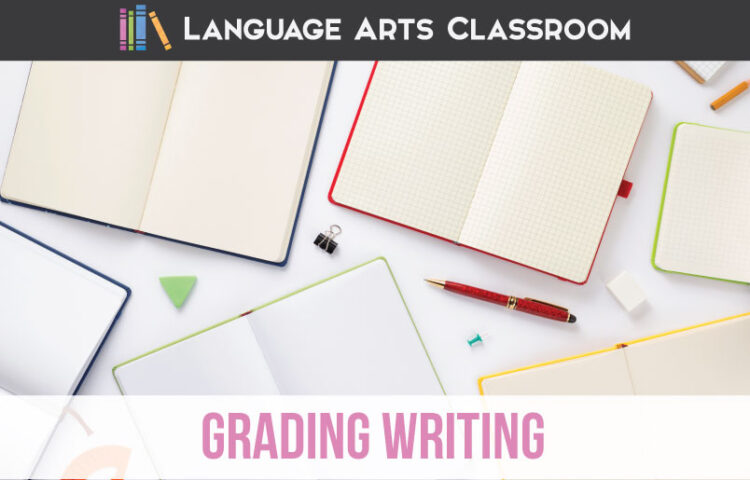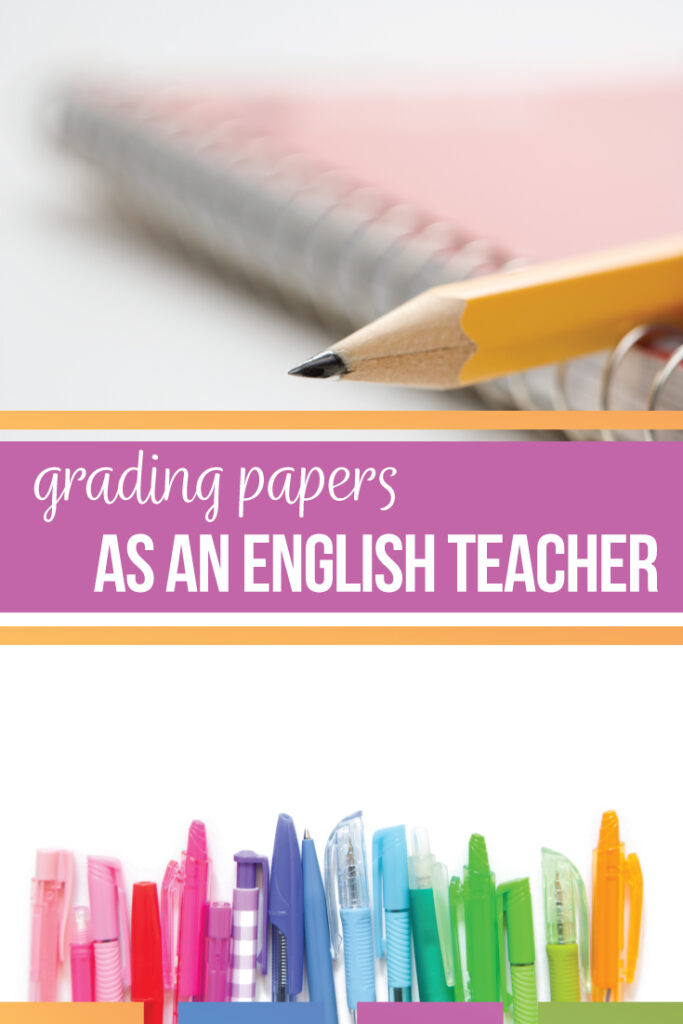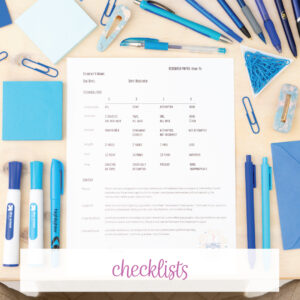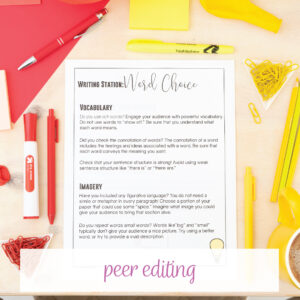Looking for how to grade writing assignments? I’ll give the best advice I have!
By the end of the school year (or maybe in October? I don’t know), grading student work has taken its toll. Working and conferencing with secondary writers takes time and energy. Differentiating and scaffolding the writing process requires planning and prepping. I honestly enjoy writing with my students. I feel differently about grading papers or writing tests.
First, I stress over feedback. I never want to squash writers; I want to encourage them along. Many of my high schoolers will attend college in a few years, and I know the frequency and speed they’ll need to crank out papers. Part of my job is to prepare them.
Second, every class has a variety of writers. Some students aspire to write for a living. Others dread writing. Some have obstacles that I can’t see. All of these ideas weigh on me as I grade student essays.
Finally, tired teachers want to provide meaningful feedback, but writing (common core! mandates!) assignments require an immense time commitment. High school students write long papers and their details (MLA citing and words cited pages) can create marathon grading sessions. A research paper or speech can take me up to 30 minutes to grade. 25 students per class?
30 X 25 = teacher burnout. The mental health of teachers matters. The time spent grading can feel unbearable.
I don’t have all the answers to grade writing assignments quickly and efficiently, but it is possible to cut back on grading student writing with a few tools. Having a rubric or a checklist before assigning a paper communicates expectations to students, and peer editing teaches many important writing lessons.
What are your best tips for grading writing assignments?
I’ve learned that the more I work with students before the final draft is due, the less time I spend grading. Plus, that’s the overall goal, right? Students should own their writing process and produce material that best showcases their skills.
I’ve gathered tools that hopefully will help you cut back on grading student writing.
Checklists.
Every long writing assignment that passes my desk receives a note. A student writes a 3-page paper—how could I not write a few sentences?
What does help me cut back on time is a checklist rubric. Since the checklist is efficient, it can be short and catered to every class. Type up a list of what students need to focus on: topic sentences, complete sentences, stronger transitions, and on. What about grammar? Misplaced modifiers, comma use, and incomplete sentences can wreck a student’s great ideas. Wherever that particular class needs to improve, make it part of their checklist. Then grade them on that checklist alone, or use the checklist as a starting point, to get a feel for the paper.
Another method that incorporates a checklist is asking students to set goals. Students will identify the focus as a writer. The goal could be stronger transitions, clear organization, or improved vocabulary. Incorporate that goal into the checklist. Students will take ownership of their writing, and you can have differentiated assignments.
Finally, the best part about using a checklist is moldable. If students suddenly understand and can apply subject-verb agreement, switch that part of the checklist out. Be sure to highlight this for students to show them how they have grown. A bunch of comments can overwhelm students where a checklist does not overwhelm.
Simple points for shorter assignments.
Not every writing assignment a class completes needs to be long and elaborate. In fact, I find meaning in quirky, fun writing activities. Not only can I grade these writing assignments quickly, but I also have a fast turn-around time. Students receive fast feedback, and I have immediate data for future writing and grammar lessons.
First, create a basic point system for short writing assignments. I’m a fan of “out of 10” for paragraph writing or journal responses. (I’ve also used check plus, check, and check minus.) Whatever you decide to use, post the expectations for students to see. Normally, I grade these shorter assignments on improvement, and many students receive a 10/10. I also allow students to drop their lowest score the semester because everyone has an “off” day.
Second, like the checklists, this point system can change as students progress. It is easy to assign these grades. I have found that using this simple point system does not work well on longer assignments because students want (and deserve) more feedback. As students improve and we focus on tougher writing areas, our checklist evolves.
Finally, post your checklist online. Your students and their parents will appreciate a fast explanation.
Combination rubrics.
By ‘combination” I mean strict point-based rubrics along with a general, guideline rubric. The first will not have much wiggle-room, but the second one will. When I use such a writing rubric, I use conferencing cards to support students with areas for improvement.
Such a rubric might look like this: With MLA citation pages, a rubric will cover details like spacing, font, alphabetical order, correct order, etc. Those pieces are objective and a point-based rubric will work.
For the rest of the research paper, have a general rubric—focus, support, organization, grammatical concepts, etc. (Tip: for my general rubrics, I like to have space for my notes and feedback to students.) If you are working on standards, this rubric will help as you mark what students are meeting and what they are not.
The latter type will take longer to complete, but you can take into account how students have improved and individual situations. For the first, strict rubric there are fewer ways to adjust points, but with documenting sources there most often is a correct and incorrect way. I use a combination of rubrics to lessen my time grading.
Peer editing.
Older students can and should provide meaningful feedback to each other. With intensive and purposeful work, students on both side of the editing activity will improve as writers.
After years of tweaking, I created the interactive peer editing system. This keeps students engaged and switching papers. As students correct their papers, they learn, and my grading is easier too.
Because this system is for small groups, students are moving which helps reluctant writers. Plus, I can rotate among students and help them. The largest shift in my teaching of writing and lessening my grading load happened when I extensively worked with students before turning in assignments.
Learning how to grade writing assignments fairly and effectively while saving your sanity and social life is a steep learning curve. I honestly can’t say I’m a pro, because I see ELA teachers twenty-five years into the business still exhausted from late night grading sessions. I have improved over the years, and using a variety of rubrics helps me to cut back on grading student writing.
What tricks do you use? Better yet: do you have any advice for how to grade writing assignments? I’d love to read about your ideas in the comments.







